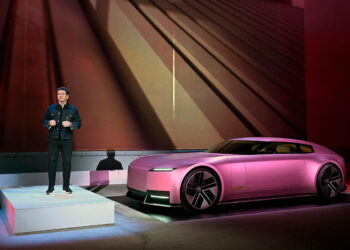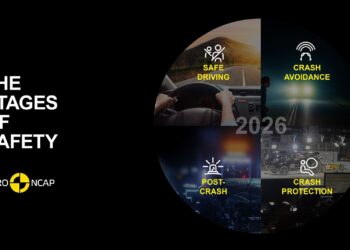The Tesla Cybertruck, while boasting an impressive design and a cult following, has stirred frustration among its owners, particularly due to its missing driver assistance systems. Despite many Tesla enthusiasts claiming the vehicle is “a blast to drive” and asserting that it doesn’t need Full Self-Driving (FSD), they frequently ask Tesla CEO Elon Musk and other executives when FSD will be available for the Cybertruck.
For many outside the Tesla fanbase, the absence of FSD isn’t the primary concern—it’s the fact that the Cybertruck lacks even basic driver assistance features. This oversight could have dire consequences, both in terms of safety and potential industry recognition. Without features like Lane Keep Assist or Lane Departure Warning, the Cybertruck would likely fail to secure coveted safety ratings, such as the IIHS Top Safety Pick.
Tragically, one Cybertruck accident has already raised alarms, where the absence of driver assistance features led to a fatal crash. Many believe that had the truck been equipped with systems like Lane Keep Assist, the accident could have been avoided.
Tesla is slowly making progress in addressing this issue. Last month, they introduced Vision Park Assist for the Cybertruck, a feature that offers 3D visualizations of the vehicle’s surroundings, making parking in tight spaces easier. However, the feature falls short of the Autopark capability seen in other Tesla models, a frustration for many.
Recently, Tesla began rolling out Vision Autopark with its 2024.32.5 software update. This feature allows select Cybertruck owners to watch their vehicle autonomously steer into parking spaces, with the steering wheel turning by itself. While this is a promising addition, it has only reached a small group of owners so far, leaving the wider fleet waiting for the full rollout.
An unexpected point of contention arose regarding the Cybertruck’s steer-by-wire system. Some owners questioned why the steering wheel needed to rotate at all during Autopark, given that the truck’s steering isn’t mechanically linked to the wheels. Elon Musk acknowledged the criticism, suggesting that Tesla should change the yoke to remain stationary during automated driving.
However, such a change might not be as beneficial as it seems. The turning steering wheel provides important visual feedback, especially when the driver needs to take over. A stationary yoke could cause confusion in high-pressure situations, such as when the vehicle is veering right but the yoke remains centered. In these moments, it’s crucial for the driver to know how the wheels are positioned, and a non-moving yoke could lead to dangerous misjudgments.
Tesla continues to weigh the balance between innovation and practicality with its Cybertruck, but the absence of basic driver assistance remains a significant concern. As the company moves forward, the question remains whether these updates will be enough to quell the growing frustrations of owners and ensure the Cybertruck is as safe as it is futuristic.










